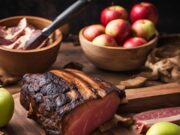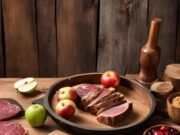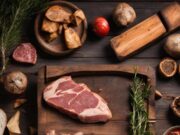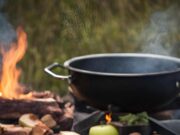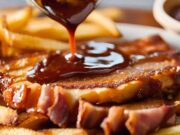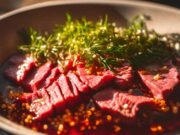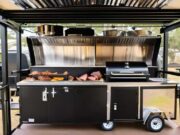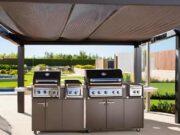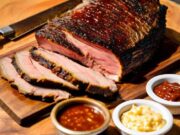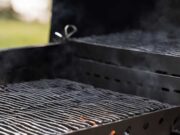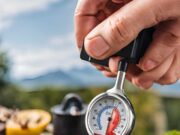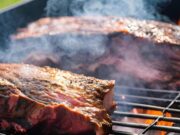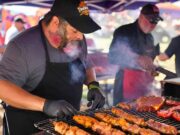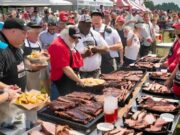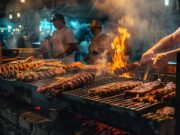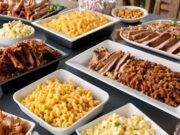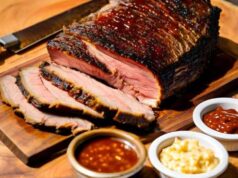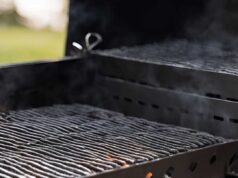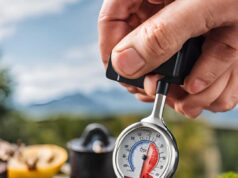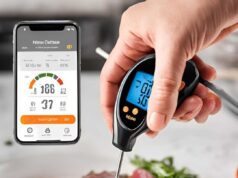- Key Takeaways:
- Why Temperature Matters in BBQ
- Types of Grills and Their Temperature Control Mechanisms
- Essential Tools for Monitoring Temperature
- Understanding Direct and Indirect Heat
- Mastering the Art of Preheating
- Temperature Zones: Creating Hot and Cool Areas
- Common Temperature Mistakes to Avoid
- Using Marinades and Rubs to Influence Cooking Temperature
- Tips for Grilling Different Types of Meat
- Finishing Touches: Resting Meat After Cooking
- Frequently Asked Questions
Grilling is an art that fundamentally relies on one crucial factor: temperature control.
Whether you are an experienced pitmaster or a weekend grilling enthusiast, understanding how to manage heat can significantly impact the outcome, distinguishing a perfectly seared steak from a charred disappointment.
This guide offers essential tips and tools for mastering BBQ temperature control, addressing everything from the various types of grills to the critical importance of allowing your meat to rest.
Prepare to elevate your grilling expertise.
Key Takeaways:
- Proper temperature control is crucial for achieving delicious flavors, textures, and food safety in BBQ.
- Understanding the different temperature control mechanisms of various grill types is essential for successful grilling.
- Preheating, creating temperature zones, and using marinades and rubs can all influence cooking temperature and result in better grilled meats.
Why Temperature Matters in BBQ
The temperature at which you cook your food during BBQ can significantly impact the flavors, textures, and overall safety of your meals, making temperature management an essential skill for any grilling enthusiast.
As the heat rises, it activates the Maillard reaction, a complex series of chemical changes that enhance the browning effects and umami flavors in both meats and vegetables. This reaction typically occurs between 300°F and 500°F, where sugars and amino acids combine to create the rich, savory crust that is so desirable.
It is also crucial to adhere to food safety standards, as cooking at insufficient temperatures can leave harmful bacteria alive. Ideally, meats should reach an internal temperature of at least 165°F to ensure safety and minimize the risk of foodborne illnesses. Therefore, understanding the balance between achieving that perfect sear and following safety guidelines is vital for any grilling aficionado.
Types of Grills and Their Temperature Control Mechanisms
Understanding the different types of grills, including charcoal and gas grills, is crucial for mastering temperature control, as each type offers unique mechanisms for managing heat during grilling.
Charcoal grills are renowned for imparting a rich, smoky flavor and rely on the careful arrangement of briquettes or lump charcoal. This allows users to adjust airflow and effectively manage cooking temperatures.
Conversely, gas grills provide a more convenient option with precise temperature settings, thanks to easily adjustable burners that can be turned on or off as needed.
Additionally, electric grills are becoming increasingly popular due to their versatility and ease of use, making them ideal for individuals living in apartments or areas with strict open flame regulations.
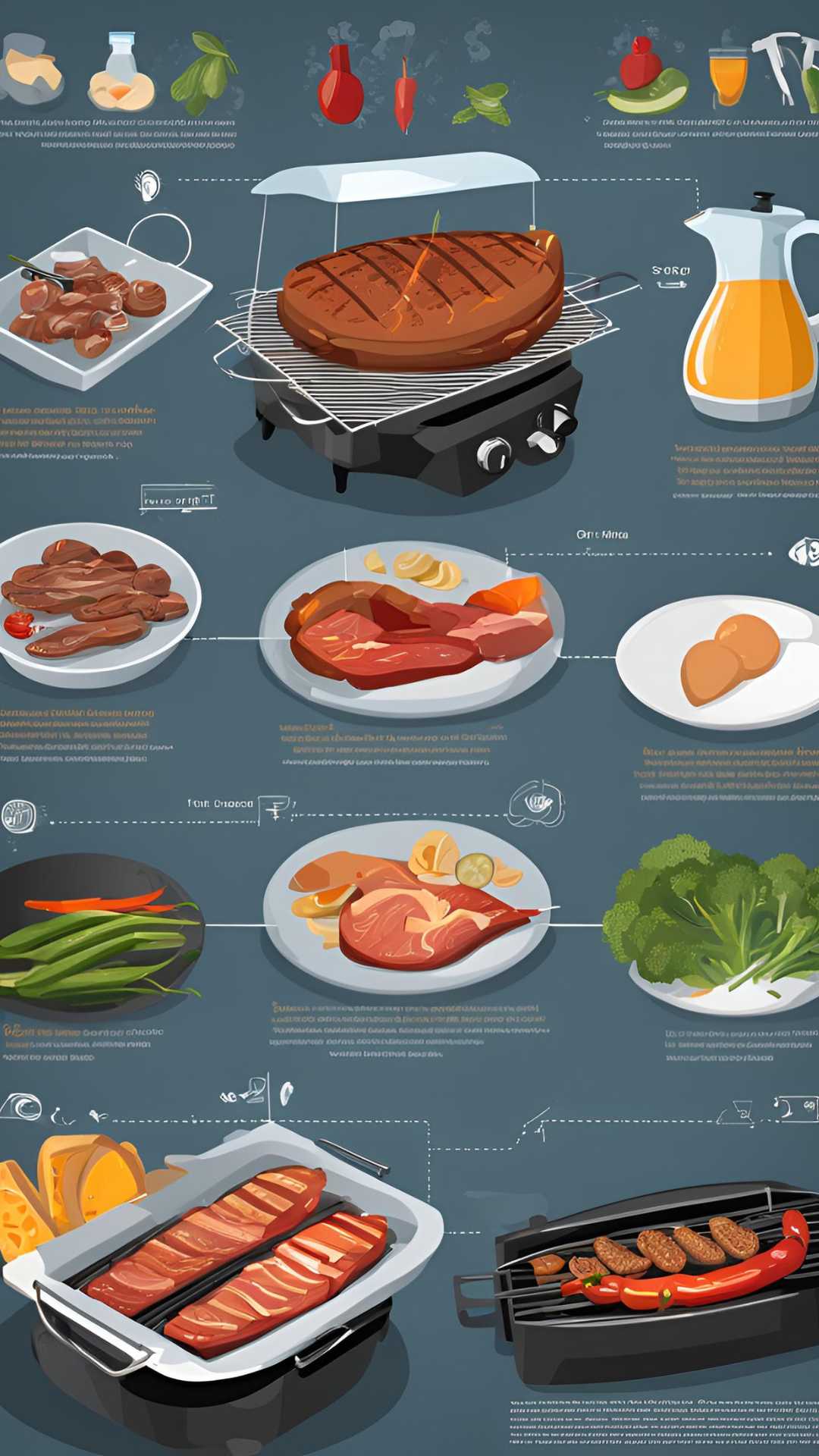
Flat top grills, on the other hand, offer a substantial cooking surface and even heat distribution, which is perfect for achieving that desirable sear on various food types.
Each grill type enhances the grilling experience by give the power toing users to control heat in ways that align with their culinary preferences.
Essential Tools for Monitoring Temperature
Utilizing the appropriate tools for monitoring temperature is essential for successful grilling. Key instruments such as instant-read thermometers, grill thermometers, and meat thermometers play a crucial role in ensuring that your food is cooked to perfection each time.
These tools not only enhance your grilling experience but also promote food safety by accurately measuring the internal temperatures of meats and vegetables. For example, an instant-read thermometer is invaluable for quickly assessing doneness, while a grill thermometer provides a comprehensive overview of the cooking environment.
To use these tools effectively, it is important to insert the probe into the thickest part of the meat, taking care to avoid bones, which can lead to inaccurate readings. Regular calibration of your thermometers is vital for maintaining accuracy, allowing you to consistently achieve those perfect, succulent results every time you grill.
Understanding Direct and Indirect Heat
Mastering the concepts of direct and indirect heat is essential for effective temperature management in grilling. Each method serves distinct purposes and can help achieve various cooking results.
Understanding these techniques can elevate your grilling skills, allowing for better control over the flavors and textures of the food you prepare. Direct heat involves placing food directly over the flame, which is ideal for searing meats, achieving a crispy exterior, and quickly cooking smaller items like burgers or vegetables. In contrast, the indirect heat method positions food away from the direct flame, making it perfect for larger cuts of meat such as ribs or whole chickens, which benefit from a slow and steady cooking process.
By utilizing these methods thoughtfully, you can significantly influence cooking times and enhance the overall taste of your grilled dishes.
Mastering the Art of Preheating
Preheating your grill properly is a crucial step in the grilling process that can significantly enhance your cooking experience and ensure that your food cooks evenly while retaining its juiciness.
A well-preheated grill not only helps in achieving those appealing grill marks but also prevents food from sticking to the grates. To execute this correctly, begin by turning on the grill and setting it to the desired temperature, typically around 450°F to 500°F for most grilling needs.
Allow sufficient time for the grill to heat up, which generally takes about 10 to 15 minutes, depending on the type and size of the grill. Utilizing a grill thermometer can assist you in accurately gauging this temperature. This essential step allows the grill’s surface to reach the appropriate cooking heat, making it easier to sear meats and lock in flavor.
For optimal results, it is advisable to keep the lid closed during preheating. This practice retains heat and accelerates the process, providing a perfect foundation for deliciously grilled meals.
Temperature Zones: Creating Hot and Cool Areas
Creating designated hot and cool zones on your grill is an effective strategy for temperature control. This approach allows you to manage different cooking methods simultaneously, significantly enhancing your outdoor cooking experience.
By establishing these temperature zones, you can achieve perfectly grilled meats with a beautiful sear, while keeping delicate items such as vegetables or fish away from direct heat to prevent burning. For instance, gas grills often feature multiple burners that can be adjusted to create contrasting heat levels across the grilling surface. In contrast, charcoal grills require a bit of skill in coal placement to establish these zones effectively.
This technique not only enhances the overall flavor but also ensures that food cooks evenly, instilling confidence in your grilling abilities and enabling you to prepare a wider variety of dishes at the same time.
Common Temperature Mistakes to Avoid
Avoiding common temperature mistakes is crucial for successful grilling; even small oversights can result in undercooked or burnt meat, which can ruin the flavors and textures of your dishes.
Grilling demands careful attention to temperature, yet many individuals tend to overlook this fundamental aspect. A prevalent error is the failure to use a meat thermometer, which leads to uncertainty regarding doneness. Additionally, frequently lifting the grill lid disrupts the cooking flow, releasing heat and resulting in inconsistent temperatures.
Misjudging cooking times can also lead to frustration, as the assumption that all meals will cook at the same rate often results in disappointing outcomes. To overcome these pitfalls, it is advisable to invest in a reliable meat thermometer, minimize the number of times the lid is opened, and familiarize yourself with the cooking times for different cuts of meat. This approach will help ensure a more enjoyable grilling experience.
Using Marinades and Rubs to Influence Cooking Temperature
Utilizing marinades and rubs not only enhances the flavors of your grilled dishes but can also influence cooking temperatures and times, making them valuable tools in your grilling repertoire.
By adjusting the moisture content and acidity levels in the meat, these flavor-enhancing mixtures can significantly affect how the food cooks. For example, acidic ingredients like vinegar or citrus juice can tenderize proteins, which may necessitate a different cooking time to ensure the meat is perfectly cooked without drying out.
When marinating, the ideal duration is typically at least 30 minutes to a few hours, allowing sufficient time for the flavors to penetrate without resulting in an overly mushy texture. It is also essential to consider the type of meat; tougher cuts generally benefit more from longer marinating periods.
To achieve optimal results, a balanced approach that combines oil, acid, seasonings, and appropriate marinating time is crucial for infusing delicious flavors while maintaining a tender texture.
Tips for Grilling Different Types of Meat
Grilling various types of meat requires specific temperature guidelines to ensure that each cut is cooked to perfection, whether you are working with beef, chicken, pork, or seafood. To achieve the best results, it is essential for you to understand the ideal internal temperatures for each type of meat.
- For beef, steaks should generally be grilled to an internal temperature of 130°F for medium-rare or 145°F for medium, allowing a delicious sear to enhance flavor.
- Chicken needs to reach at least 165°F to ensure safety, while pork should ideally be cooked to 145°F to maintain juiciness and tenderness.
- Seafood is best enjoyed at around 145°F, ensuring that it is flaky yet moist.
Keep in mind that timing can vary based on the thickness of the cut and the type of grill being used, so incorporating a reliable meat thermometer into your grilling routine is a crucial practice for any grilling enthusiast.
Finishing Touches: Resting Meat After Cooking
Resting meat after cooking is an essential step in temperature control, allowing the juices to redistribute and enhancing both flavor and tenderness in the final dish.
This process requires letting the meat sit undisturbed for a specific period, which enables the fibers to relax and absorb the juices that have moved toward the surface during cooking. As the meat slightly cools, this redistribution significantly improves the overall taste and juiciness, leading to a more satisfying eating experience.
Different types of meat benefit from varying resting times; for instance, larger cuts like roasts should rest for 15-30 minutes, while smaller cuts such as steak or chicken breasts may only need about 5-10 minutes. Understanding these nuances is crucial for achieving perfectly cooked, flavorful dishes.
Frequently Asked Questions
What is the ideal temperature for grilling meat?
The ideal temperature for grilling meat varies depending on the type of meat, but generally ranges from 225-275°F for slow cooking and 350-450°F for faster cooking. It’s important to use a meat thermometer to ensure your meat is cooked to the proper internal temperature.
Why is temperature control important when grilling?
Temperature control is crucial for achieving perfectly cooked meat that is juicy and flavorful. Grilling at too high of a temperature can result in dry, tough meat, while grilling at too low of a temperature can result in undercooked or unevenly cooked meat.
How can I control the temperature of my BBQ?
There are a few ways to control the temperature of your BBQ. One method is to adjust the air vents on your grill to regulate the amount of oxygen and heat. Another method is to use a two-zone setup, where you have hot coals on one side and no coals on the other, allowing for indirect heat cooking. You can also use a temperature control device, such as a digital thermometer or a fan system.
What are some tips for maintaining a consistent temperature while grilling?
To maintain a consistent temperature while grilling, make sure to keep the lid closed as much as possible to trap in heat. You can also use a water pan or a spray bottle to add moisture to the grill and prevent flare-ups. Additionally, avoid constantly opening the lid to check on the food, as this can cause fluctuations in temperature.
How do I know when my grill has reached the desired temperature?
You can use a temperature gauge or thermometer to determine the temperature of your grill. It’s also helpful to know the hot spots on your grill, as certain areas may be hotter than others. You can test the temperature by placing your hand a few inches above the grate – if you can only hold it there for a few seconds, the grill is at high heat, while if you can hold it there for 5-6 seconds, the grill is at medium heat.
What are some common mistakes people make when trying to control the temperature of their BBQ?
Some common mistakes people make when trying to control the temperature of their BBQ include using too much charcoal, not allowing enough time for the grill to preheat, and constantly opening the lid. Additionally, not using a meat thermometer can result in overcooking or undercooking the meat.



